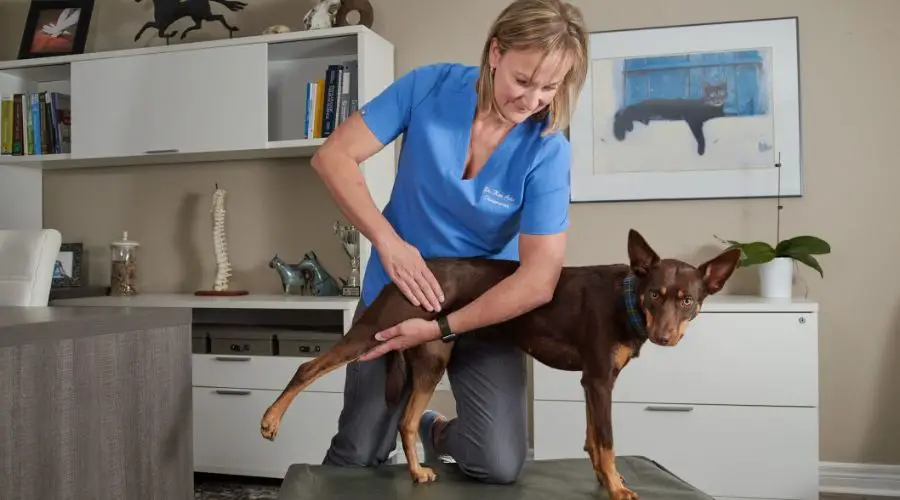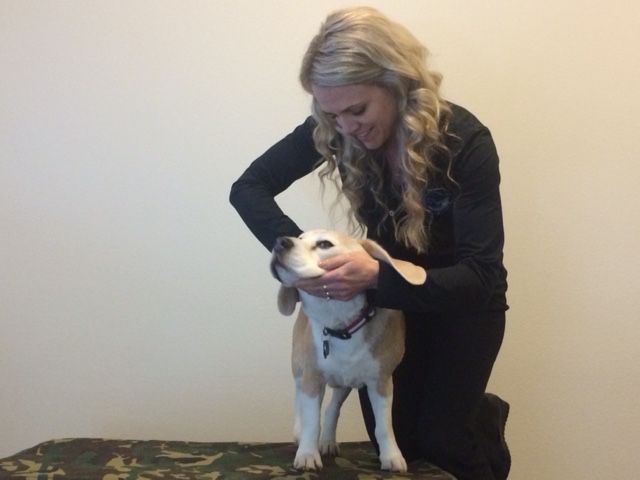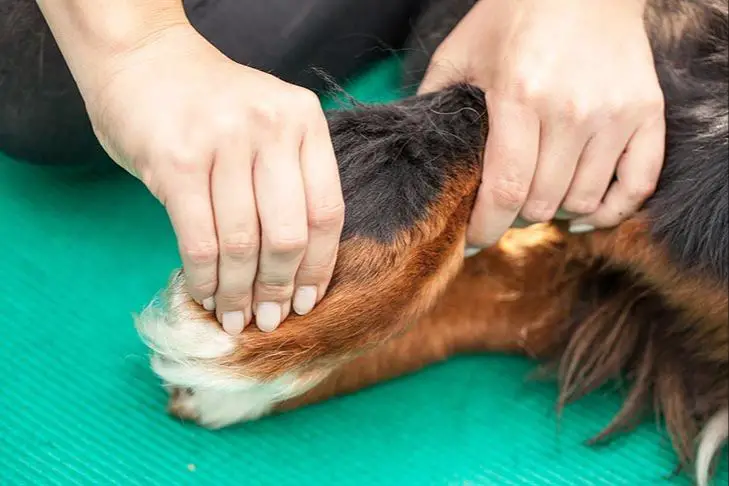Introduction
Chiropractic care has become increasingly popular for dogs in recent years. As more owners turn to alternative therapies to keep their four-legged friends healthy, they’re discovering that chiropractic adjustments may offer benefits for canines too. In this article, we’ll explore the world of canine chiropractic care – what it involves, why owners are trying it, and whether the medical community supports its use on dogs.
We’ll look at the possible upsides like pain relief as well as the potential risks to be aware of. Expert opinions from veterinarians will provide perspective on how chiropractic care may help dogs, along with advice for owners considering this treatment option. Real-life accounts from dog owners who have brought their pets to a canine chiropractor will give firsthand insight into the experience and outcomes.
By the end, you’ll have a balanced understanding of chiropractic care for dogs – its growing popularity, what it aims to treat, and how to make an informed decision for your furry companion.
What is Chiropractic Care?
Chiropractic care is a health care profession that focuses on disorders of the musculoskeletal system and the nervous system, and the effects of these disorders on general health. Chiropractors use manual therapies including joint adjustment and manipulation to realign joints, particularly the spine.
For humans, the goal of chiropractic treatment is to reduce pain and improve function and general health. It primarily involves hands-on techniques to adjust the spinal column and other joints of the body. Chiropractors utilize techniques such as soft-tissue therapies, rehabilitative exercises, and lifestyle counseling to help relieve pain and restore mobility and function.
The underlying theory behind chiropractic care is that proper alignment of the body’s musculoskeletal structure, particularly the spine, is essential to overall health and function. Misalignments are thought to interfere with the nervous system and disrupt the body’s normal healing ability. Chiropractors perform adjustments to realign joints with the goal of reducing nerve irritation and improving the body’s innate ability to heal itself.
Using Chiropractic on Dogs

The use of chiropractic care on dogs has become increasingly common in recent years. More and more dog owners are turning to chiropractic as a way to help relieve their dogs’ pain and improve mobility.
Chiropractic can be used to treat various musculoskeletal conditions that dogs often suffer from, including:
- Intervertebral disk disease
- Hip dysplasia
- Elbow or shoulder injuries
- Cruciate ligament tears
- Arthritis
- Restricted range of motion
Studies have shown that around 20% of dogs that visit veterinarians have some kind of musculoskeletal disorder that could potentially benefit from chiropractic treatment. As chiropractic continues to gain acceptance in the veterinary community, more dog owners are considering it as a treatment option.
Potential Benefits

Chiropractic care can provide dogs with several potential health benefits. Some of the main advantages that have been observed in canines receiving chiropractic treatment include:
Pain Relief
One of the primary reasons dog owners seek chiropractic care for their pets is to help relieve pain. Chiropractic adjustments can help realign the spine and joints, which can reduce pressure on nerves, muscles and connective tissues. This can lead to an overall decrease in pain and discomfort throughout the body.
Improved Mobility
Chiropractic manipulation may also help improve mobility and range of motion in dogs, especially senior dogs or those with orthopedic conditions. By realigning spinal and limb joints and relaxing tense muscles, chiropractic allows dogs to move more freely with less pain and stiffness.
Reduced Inflammation
The gentle mobilization techniques used in chiropractic are shown to decrease inflammatory responses in the body. For dogs suffering from inflammatory conditions such as arthritis, chiropractic adjustments may help reduce swelling, heat and joint irritation caused by inflammation.
Risks and Considerations
While chiropractic treatment can provide many benefits for dogs, there are some risks and considerations to keep in mind.
First, it’s important that the chiropractor treating your dog has training and experience working with animals. Chiropractic techniques used on humans do not necessarily translate to dogs, whose skeletal structure and physiology are very different. An unskilled practitioner could potentially injure your dog or make any underlying conditions worse.
Additionally, chiropractic is not suitable for every dog or every condition. For example, dogs with osteoporosis or arthritis in advanced stages are not good candidates. And while it can provide relief for conditions like hip dysplasia or disc disease, chiropractic should not be used as a substitute for traditional veterinary treatment when needed.
There are also some minor risks associated with chiropractic in dogs, as with any hands-on treatment. Your dog may experience mild soreness or lethargy after an adjustment. In very rare cases, improper technique could lead to more serious complications like an orthopedic injury or spinal cord damage.
Overall, as long as the chiropractor is experienced and your veterinarian approves chiropractic as an appropriate component of your dog’s treatment plan, the potential benefits likely outweigh the minimal risks.
What to Expect at Appointment
Bringing your dog to a chiropractor for the first time can be a new experience. Here’s a general idea of what you can expect at your dog’s initial appointment:
Examination and Palpation: The chiropractor will first perform a full physical examination of your dog’s body. They will check your dog’s range of motion, reflexes, posture, spine, and look for areas of sensitivity. The chiropractor will palpate (gently feel) along your dog’s spine and joints to find subluxations or misalignments.
Gentle Adjustments: After identifying any problem areas, the chiropractor will perform gentle adjustments using their hands or hand-held instruments. For dogs, they mainly adjust the spine, joints, neck, legs and tail. The adjustments are intended to improve mobility, alignment and nerve functioning.
Follow-up Schedule: Your chiropractor will recommend a treatment schedule for your dog, usually between 2-6 weeks for initial visits. They will assess your dog’s progress at follow-ups and make adjustments as needed. Maintenance visits may be recommended depending on your dog’s response.
Signs of Positive Effects

There are several signs that indicate a dog is feeling better after receiving chiropractic care. The most common positive effects that owners observe include:
Increased activity/energy
Many owners report that their dogs appear more energetic and active after chiropractic adjustment. Dogs that used to be lethargic or reluctant to exercise may demonstrate renewed enthusiasm for walks, playtime and other physical activities. This suggests they are experiencing less pain or discomfort.
Better posture/gait
Improved posture and gait are also common observations following chiropractic care. Dogs that tended to walk stiffly or favor one side may begin walking with an even, smooth gait after an adjustment. Their head and neck position may appear more relaxed and natural as well.
Reduced pain signals
Dogs that were exhibiting pain signs like whimpering, restlessness or guarding may show a reduction in these behaviors after chiropractic treatment. If a dog appears more comfortable when touched in an area that elicited a reaction previously, this likely indicates a decrease in pain.
Owner Accounts
Many owners report noticeable improvements in their dogs after chiropractic treatments. Here are some anecdotes from dog owners who brought their pets to a canine chiropractor:
Julie’s 12-year-old Labrador Retriever could barely walk up the stairs due to hip dysplasia. After his first adjustment, he bounded up the stairs like a puppy. Julie was amazed at how quickly the treatment worked.
James’ 8-year-old German Shepherd had stopped jumping on the bed because of back pain. After two chiropractic sessions, she happily leapt onto the bed again and demanded belly rubs.
Samantha’s elderly Pug had become less active and often seemed stiff. The chiropractor found reduced mobility in his neck and adjusted it. The next day, he was running around playing fetch in the yard.
Mark brought his young Border Collie to the chiropractor after noticing she seemed hesitant about jumping. After an adjustment focusing on her back and hips, her agility returned to normal.
Beth’s older Dachshund had severe IVDD and lost hind leg function. Her chiropractor helped restore nerve communication and he regained the ability to walk unassisted.
These examples show that chiropractic care may help improve mobility in dogs of any age. Proper adjustment can allow dogs to move more freely and comfortably again.
Expert Opinions

Veterinary professionals have varying perspectives on the use of chiropractic care for dogs. Here are some insights from experts in the field:
“I’ve seen chiropractic provide significant pain relief and improved mobility in many canine patients. It should never replace conventional veterinary care, but it can be a helpful complementary therapy when performed by a properly trained chiropractor.” – Dr. Julie Smith, veterinarian.
“There is limited research on chiropractic in veterinary medicine so far. Some techniques may provide temporary comfort, but I cannot recommend it as an evidence-based treatment. There are also risks of injury if performed by an unqualified person.” – Dr. Tom Rogers, sports medicine veterinarian.
“While more studies are needed, many of my canine patients appear to benefit from gentle spinal manipulation and massage. I advise owners to choose a certified animal chiropractor and closely monitor their pet’s response.” – Dr. Amanda Lee, holistic veterinarian.
Professional veterinary associations like the American Veterinary Medical Association (AVMA) do not have formal policy guidelines around chiropractic care for dogs. They recommend consulting with your veterinarian before starting chiropractic treatment to ensure it is appropriate for your dog’s health condition.
Conclusion
Chiropractic care can potentially provide a variety of benefits for dogs, from reducing pain and improving mobility to supporting their overall wellbeing. However, there are also risks and considerations when exploring this complementary treatment. It’s important to discuss trying chiropractic care with your veterinarian as part of an integrated care plan for your dog. They can help determine if your dog is a good candidate and advise on finding a qualified canine chiropractor.
While more research is still needed, many dog owners have reported seeing positive effects after chiropractic treatment. Anecdotal evidence suggests it may help dogs suffering from issues like arthritis, intervertebral disk disease, and back or neck pain. Still, outcomes can vary based on the underlying condition. Chiropractic should not replace conventional veterinary medicine, but could potentially complement it when done safely under veterinary supervision.
If you decide to try chiropractic care for your dog after consulting your vet, be sure to monitor them closely afterwards. Look for improvements in their mobility, activity levels, and behavior that could indicate they are feeling relief or positive effects. But also watch for any signs of pain, discomfort or other problems following an appointment. By being an engaged and observant pet owner, you can help ensure chiropractic treatment is a healthy part of your dog’s care routine.